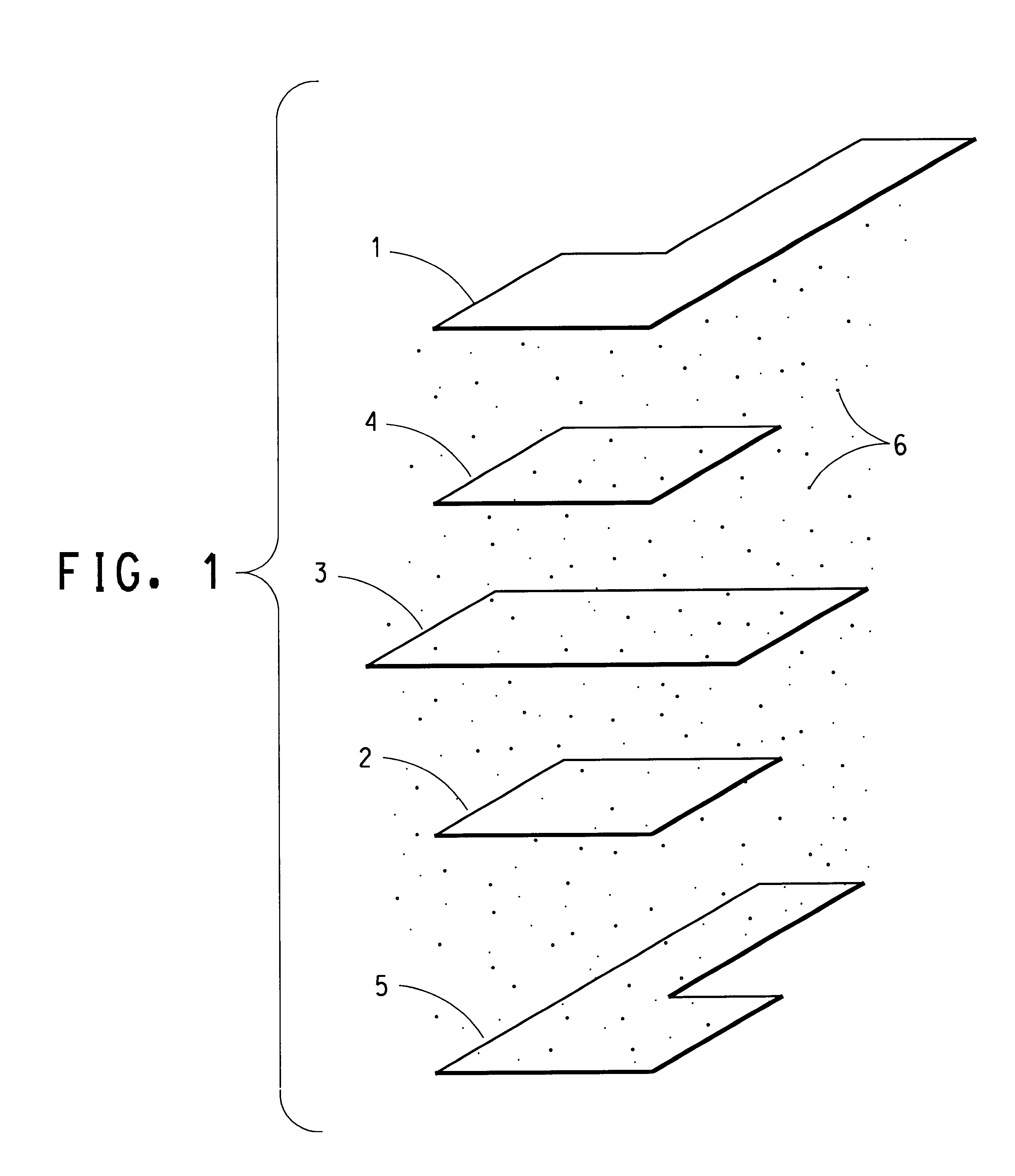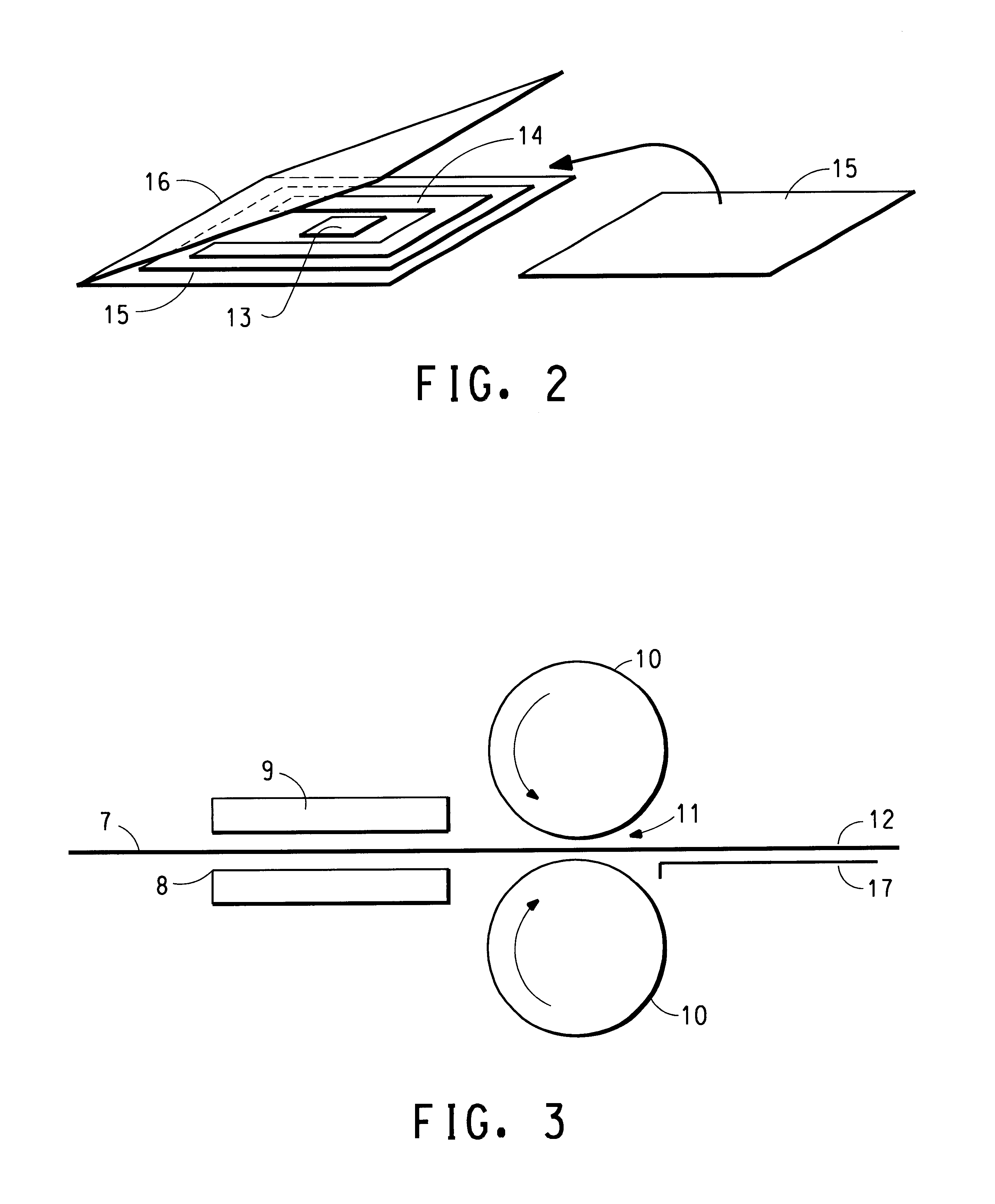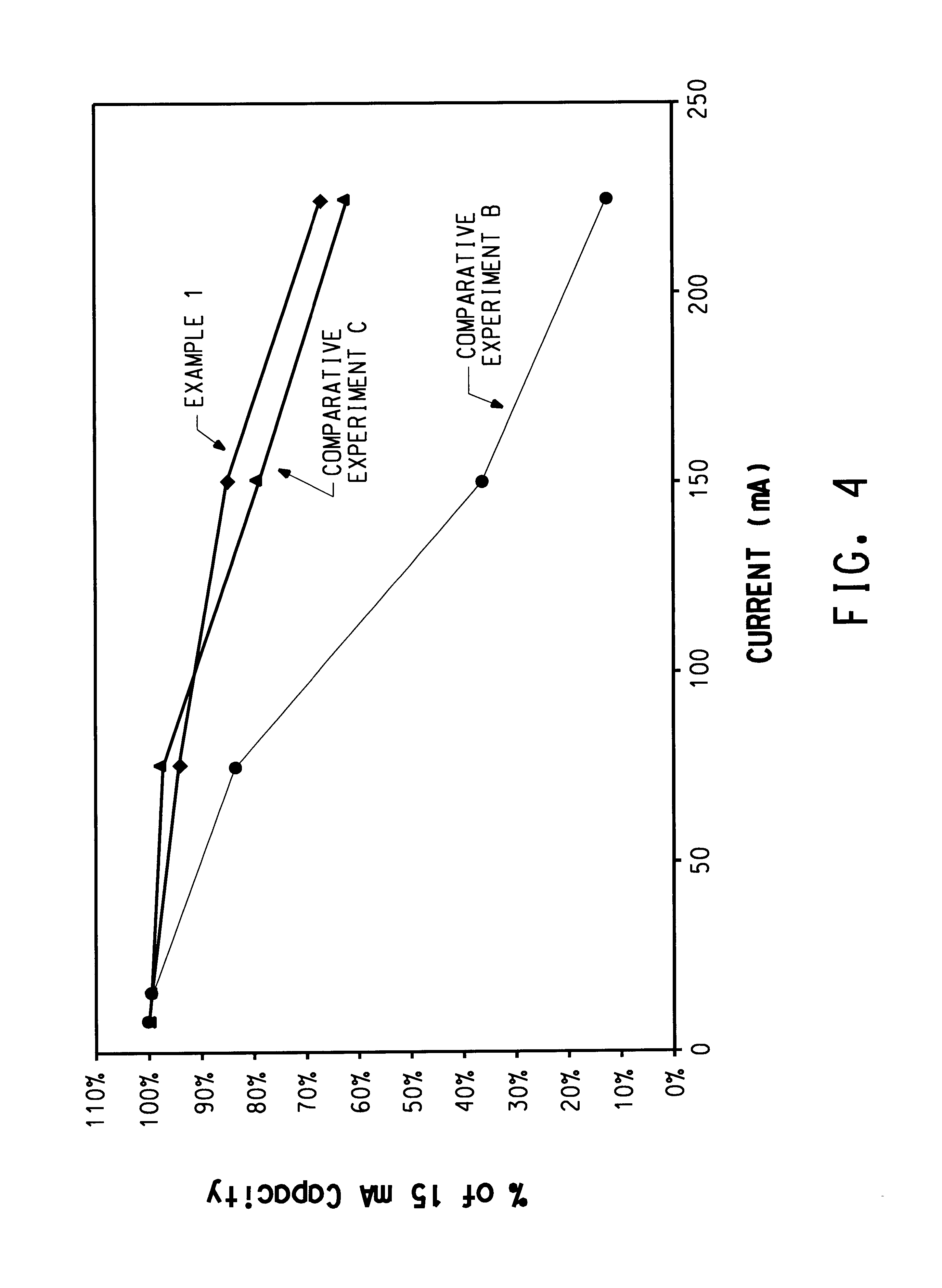High performance lithium or lithium ion cell
a lithium or lithium ion cell, high-performance technology, applied in the direction of non-aqueous electrolyte cells, cell components, sustainable manufacturing/processing, etc., can solve the problems of low battery operating temperature, lack of thermal stability, and high cost, and achieve the effect of limiting the operating temperature of the battery
- Summary
- Abstract
- Description
- Claims
- Application Information
AI Technical Summary
Benefits of technology
Problems solved by technology
Method used
Image
Examples
example 1
A cell was fabricated by the process of Gozdz et al. in U.S. Pat. Nos. 5,456,000 and 5,540,741, however flexible graphite foil was employed as the cathode current collector and the salt was (CF.sub.3 SO.sub.2).sub.2 NLi.
Cathode film was made by mixing in acetone solvent 65 parts LiCoO.sub.2 (FMC Corp.), 6.5 parts Super P carbon black (MMM Carbon), 10 parts KYNAR FLEX.RTM. 2801 (Elf Atochem), and 18.5 parts dibutyl phthalate. Films were cast using the doctor blade technique and the acetone evaporated, providing cathode with a coating weight of 19.1 mg / cm.sup.2 and a thickness as-cast of approximately 79 .mu.m. Anode film was made by mixing in acetone solvent 65 parts MCMB 2528 (Osaka Gas), 3.3 parts Super P carbon black, 10 parts KYNAR FLEX.RTM. 2801, and 21.7 parts dibutyl phthalate. After casting and acetone evaporation, the anode film had a coating weight of 17.5 mg / cm.sup.2 and a thickness of approximately 109 .mu.m. Separator film was made by mixing in acetone solvent 26 parts f...
example 2
In this embodiment, the Grafoil.RTM. of Example 1 was employed as therein described. All the solid components were dried under vacuum at 120.degree. C. and contained less than 30 ppm H.sub.2 O. Unless stated otherwise, all the processing after the drying step was carried out inside an argon-filled dry box. The binder in the electrodes and the polymer in the separator were lithium sulfonate form of a hydrolyzed copolymer of vinylidene fluoride (VF) and perfluorosulfonyl fluoride ethoxy propyl vinyl ether (PSEPVE), prepared according to the method of Doyle et al., U.S. Pat. No. 6,025,092. The polymer contained 9.about.10 mol % of PSEPVE and had a molecular weight estimated to be ca. 200,000 Da. The solvent was a 2:1 by weight mixture of ethylene carbonate (EC, battery grade from EM Industries, Hawthorne, N.Y.) and butylene carbonate (JEFFSOL.RTM. BC, Huntsman Corporation, Salt Lake City, Utah)
A cathode composition was prepared by combining, 8.7 g of the binder, 7 g of Super P carbon b...
example 3
The contact impedance of the cathode-graphite collector interface was measured as follows. Using the cathode film from Example 1, untreated Grafoil, and laminating films together at 135.degree. C., the structure C / G / C / C / G / C was fabricated, where C is cathode and G is Grafoil. Tabs of the Grafoil extended out beyond the cathodes, and the size of the cathodes was 2.2 cm.times.5.0 cm. Using a four-point-probe AC voltmeter, the impedance was measured between the two Grafoil pieces. The impedance at frequencies between 1 Hz and 10 kHz was found to be almost entirely real (resistive) with very little imaginary (capacitive) component, and of 0.5 ohm magnitude. The observed resistance was much higher than that calculated based on the bulk electrical conductivity of the cathode, hence the impedance is a measure of resistance at the interfaces between the cathodes and the current collectors. As the structure has 2 C / G interfaces in series, the contact impedance for one C / G interface was calcu...
PUM
| Property | Measurement | Unit |
|---|---|---|
| electrical conductivity | aaaaa | aaaaa |
| thickness | aaaaa | aaaaa |
| charging voltage | aaaaa | aaaaa |
Abstract
Description
Claims
Application Information
 Login to View More
Login to View More - R&D
- Intellectual Property
- Life Sciences
- Materials
- Tech Scout
- Unparalleled Data Quality
- Higher Quality Content
- 60% Fewer Hallucinations
Browse by: Latest US Patents, China's latest patents, Technical Efficacy Thesaurus, Application Domain, Technology Topic, Popular Technical Reports.
© 2025 PatSnap. All rights reserved.Legal|Privacy policy|Modern Slavery Act Transparency Statement|Sitemap|About US| Contact US: help@patsnap.com



